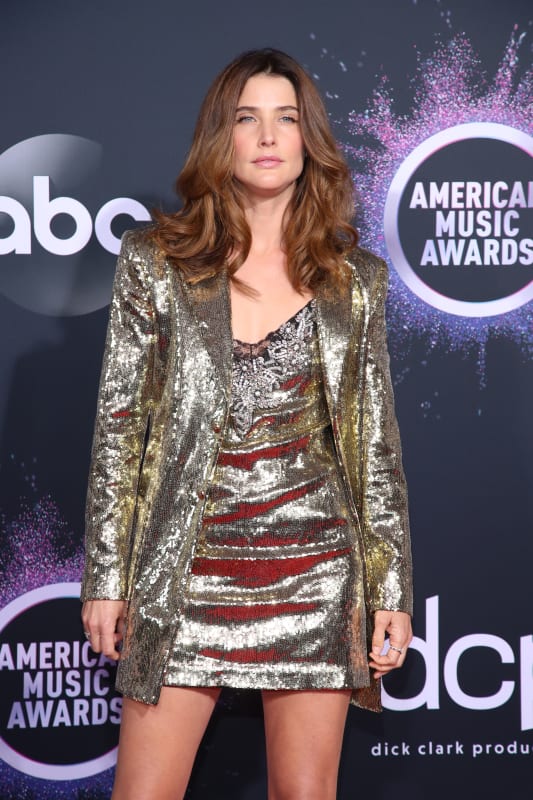When I meet people for the first time and tell them I’m a fashion designer, they tend to do one of two things. They either immediately look down at what I’m wearing, or look down at what they’re wearing. When they look at me, I don’t give an excuse for why I’m not dressed fashionably. When they look at themselves, they immediately become embarrassed and often apologize for not having dressed better. “I would have dressed better if I knew I would be meeting a fashion designer today!” is what I often hear and respond with, “Don’t worry about it. I’m probably the last person judging your clothes.” The longer I’m in fashion, the more tolerance I have for different types of dress.

Not all designers dress unfashionably. There are exceptions: Diane Von Furstenberg, Tory Burch, Cushnie et Ochs, Tom Ford. Naturally, they tend to wear the latest looks from their collections (great advertising). There are some that dress well, donning a daily 'uniform', but don't dress fashionably, like Karl Lagerfeld. And there are plenty whose personal style doesn’t match their eponymous brand’s style, like Alexander Wang, Alexander McQueen, and Max Azria. (I’m racking my brain for female examples…)
These well-known names show that there is quite a range, even though most of them have a celebrity status equal to movie stars and can easily hire stylists and personal image managers to tell them what to wear, how to act, and what to say.
Stylelessness is abundant among unknown designers. You know, the ones that sit in offices from nine to six, and make subpar pay. The invisible creatives behind every brand. The true glue that holds the industry together. There are many reasons for the lack of style. Here are just a few.
1. Fashion designers and stylists are different. Very different. Designers develop individual garments, creating loosely related pieces to form a collection. Stylists deal with the bigger picture, starting with the designer's finished garments, and adding shoes, jewelry, hair, and makeup to create a cohesive vision on the human form. Styling classes were not part of my fashion design major curriculum. Instead, sketching, CAD (computer-aided design), draping, knitting, and sewing were the core lessons. I definitely don’t have the training, experience, or time, to style my own collections, and understand why designers hire stylists to oversee lookbook and runway artistic direction. For example, Venetia Scott is a prominent stylist who most recently styled Nina Ricci’s and Roksanda Illincic’s Fall 2016 runway collections. She also has a long relationship styling for Marc Jacobs. Alexander Wang hires Karl Templer to style his collections on the runway, including the latest Spring 2017 collection and surprise Adidas collaboration. And if you look at Templer’s personal website, they’ve been working together since 2010.
2. Workaholism. Successful designers are very focused on their work, therefore they tend to neglect other aspects of life. Dressing your own person is a completely different animal from dressing other people. Most designers would rather spend time designing their clothing lines and dressing their target customer.
3. Clothing exhaustion. After spending each day designing clothes for the ideal customer, the last thing designers want to do is go home and try on outfits. Sometimes you just need a break from everything related to fabric, clothes, and fashion.
4. Designers don’t always fit within their target customer profile. This is a big reason why some designers don’t wear their own designs. It can be awkward to wear your own designs if you know you’re not the type of person you’re designing them for.
5. “It is much more difficult to judge oneself than to judge others,” Antoine de Saint-Exupéry wrote in The Little Prince. Just as it is easier to judge others’ choices and actions, it is also easier to judge others’ style. I interpret this quote as: you're the only person in your life that has an inside perspective on yourself, and this can cause biased ideas based on personal insecurities and past experiences. Things that aren't necessarily relevant to what you wear, and can actually get in the way of you being your best-dressed self. In this example, it could be beneficial for designers to receive styling suggestions from a friend or stylist (to get an outside perspective). After all, designers have insecurities and emotional baggage just like everyone else.
6. The desire to simplify life. The minimalist trend is big right now. There are different minimalist fashion concepts, including owning less clothing, and choosing quality over quantity. Before minimalism became the trend it is now, there were plenty of designers who practiced this concept. Take a page out of Karl Lagerfeld's book. Having a daily simplified ‘uniform’ saves time in a designer’s busy schedule. Think about it: if your whole closet was white button downs, blue jeans, and black sneakers, you would save so much time in the morning. Plus, wearing fashion risks increases the chance of having outfit regret anywhere from ten minutes to four hours after putting it on, and leads to lack of confidence. Confidence is a necessity in the fashion industry. That’s one piece designers must wear every single day.
7. Dressing functionally started as a necessity in college. From what I observed at The Fashion Institute of Technology, the fashion business majors had a manageable work load and didn't have to carry an absurd amount of stuff to classes, so they tended to dress up: heels, makeup, the works. The designers not so much. The work load of the design major was notoriously larger, so they didn’t have the time or energy to pamper themselves. Plus more crap to carry. Heels aren’t a smart choice while carrying a ten-pound suitcase full of fabric, scissors, humongous rulers, and a roll of paper taller than yourself. Dressing comfortably started as a necessity in school and wound up being a key differentiation between fashion designers and all other fashion professionals as we transitioned into the working world.
8. It’s a classic case of “The cobbler’s son has no shoes,” “There are only wooden spoons at the blacksmith’s house,” “The lady who sells fans fans herself with her hands,” “At the potter’s house water is served in a broken jug,” “The carpenter’s house always needs work,” “The architect’s house is always crooked.” If they do something for a living, why can’t they just make an extra for themselves, right? I don’t know, but fashion designers are the same and should have a quote like this. Here’s my attempt. “The fashion designer’s clothes are always old,” or “The fashion designer's clothes are never bold.” There you go. They even loosely rhyme. Put it on a T-shirt, or a bumper sticker.
Comment below and let me know which reason resonates the most with you and why.




































Tony Holland
Designer
Great article! I've been designing clothing for quite awhile, and I see myself in MUCH that's discussed here. My own take on the last point is that at different times, I make different choices. When I'm "marketing" myself, I will pay attention to my styling, other times I just want it to be as simple and as non-issue as possible...